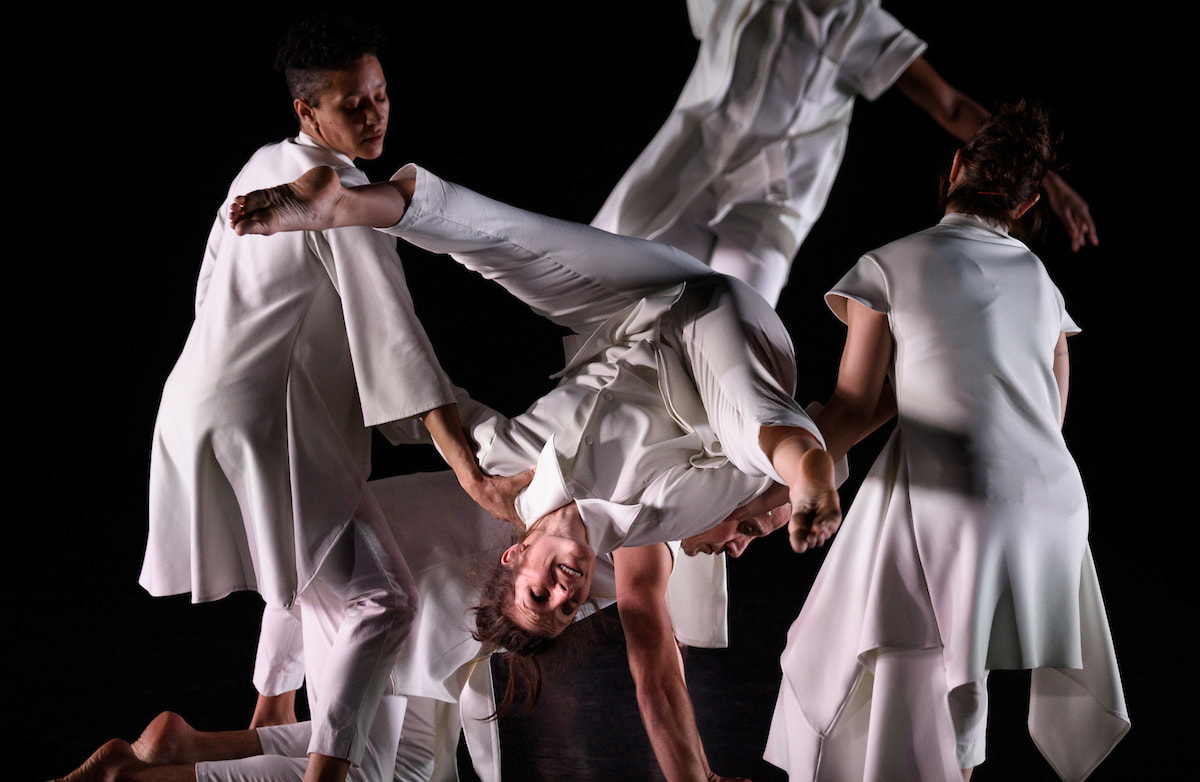|
David Dorfman Dance in the moving "A(Way) Out of My Body." (Photo by Jack Beal) David Dorfman describes his “A(Way) Out of My Body” an exploration of the “fraility and power of the body” along with collective will and the past.
But what I saw on Friday night at the University at Albany Performing Arts Center exploded that nugget into a quest to hold on — hold onto ourselves, our hearts and our humanity. Maybe it’s just the times, divisive and hateful, but Dorfman’s work, both frantic and surreal, had me contemplating how we can grab hold of each other, in a loving embrace and not let go. The piece is still a work-in-progress, with Dorfman introducing it the audience by saying many bits of the dance were refined that very day. However, it is one of the most polished unfinished works I have seen with gorgeous electronic and vocal music, composed by Sam Crawford, Zeb Gould, Jeff Hudgins and Elizabeth de Lise, and performed live by Crawford and de Lise. It also features strong, unforgettable visuals. The work features six, including Dorfman, who are all dressed in white slacks and tunics that reference 1960s Nehru jackets. Designed by Oana Botez, the white gives the impression they are angelic beings, already on the other side of life. The style brings thoughts of another turbulent time. It begins with a dimly lit vision of the dancers, arms raised and wrists pinned together. They look suspended like tortured prisoners whose toes barely brush the floor or hanging sides of beef. The stage brightens and they race in the Dorfman’s signature erratic fashion that is disorienting. High kicks, tilts that upend dancers torsos and spins surprise and warp time and space. Seemly bound wrists are released, hands become claws and scratch the air as dancers appear to be poised for battle. Then the tone shifts again to tender. Dancers uphold each other, connecting in nonsensical conversation on a stroll, carrying each other and catching yet another as she stumbles. There is another beautiful section in which the dancers appear to be floating underwater. Dorfman also tells a story of his mother’s struggle with multiple sclerosis and the moment he tried to reach for her hand just as she stumbled down a marble staircase. And then it all clicked. As dancers stretched diagonally across the stage, reaching for each other, touching some and not others, we have the distressing realization we can’t save all. The only rough spot is the awkward duet with Jenn Nugent and Dorfman, both seeming uncommitted or uncomfortable with the intimacy required. The ending was gorgeous, however. As de Lise’s divine voice rises, Kellie Ann Lynch and Myssi Robinson struggle on the floor, pushing and hugging. But in the end, they hold each other tight in a long, almost desperately forgiving hug. Then lights go out, leaving the view to contemplate a moving, personal and instructive journey that holds out hope that brotherly love will prevail.
0 Comments
Leave a Reply. |
Wendy
|

 RSS Feed
RSS Feed
